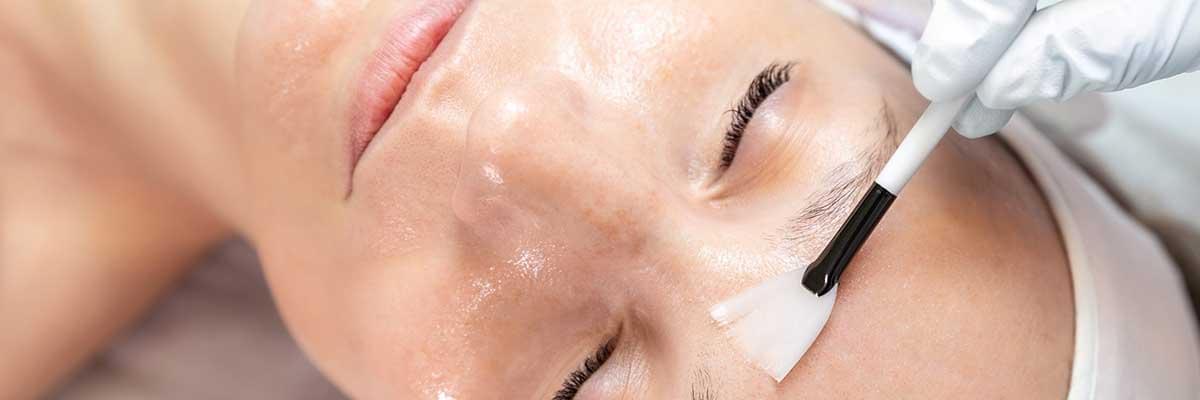
What can we do for you?
In the quest for flawless skin, chemical peels stand out as a powerful treatment to achieve a radiant complexion. These treatments work by exfoliating the top layers of the skin, revealing fresher, smoother, and more youthful-looking skin beneath. Whether you're dealing with acne scars, hyperpigmentation, or fine lines, chemical peels can help rejuvenate your skin and give you that coveted glow.Understanding Chemical Peels
Chemical peels involve the application of a chemical solution to the skin, which causes it to exfoliate and eventually peel off. The new skin underneath is typically smoother, less wrinkled, and more even in tone. Peels can vary in strength, from superficial to deep, depending on the desired results and skin concerns.
Types of Chemical Peels
1. Superficial Peels
- Alpha Hydroxy Acids (AHAs): Often made from fruit acids like glycolic acid, these peels are the mildest and are great for gentle exfoliation and brightening the skin.
- Beta Hydroxy Acids (BHAs): Salicylic acid is a common BHA used for treating acne-prone skin as it can penetrate oil-laden hair follicles.
2. Medium Peels
- Trichloroacetic Acid (TCA): These peels penetrate deeper than superficial peels and are effective for treating sun damage, pigmentation, and fine lines.
3. Deep Peels
- Phenol Peels: The strongest type of peel, used for treating deep wrinkles, severe sun damage, and scars. These require longer recovery times and are usually performed by dermatologists.
Benefits of Chemical Peels
Chemical peels offer a myriad of benefits for various skin types and concerns:
- Improves Skin Texture: By removing the damaged outer layers, peels smooth out rough patches and fine lines.
- Evens Skin Tone: Peels can reduce the appearance of hyperpigmentation, sun spots, and melasma, leading to a more uniform complexion.
- Reduces Acne and Scars: They help unclog pores, reduce inflammation, and minimize the appearance of acne scars.
- Boosts Collagen Production: Some deeper peels stimulate collagen production, enhancing skin firmness and elasticity.
What to Expect During and After a Chemical Peel
During the Treatment:
- The skin is thoroughly cleansed before the chemical solution is applied.
- You might experience a tingling or burning sensation as the peel works on the skin.
- The solution is left on for a specific period, depending on the type of peel, and then neutralized or washed off.
After the Treatment:
- Superficial peels usually cause mild redness and peeling for a few days.
- Medium peels can result in more intense peeling and redness, with recovery taking about a week.
- Deep peels require significant downtime, with swelling, redness, and peeling lasting several weeks.
Post-Peel Care
Taking care of your skin after a chemical peel is crucial for optimal results:
- Hydrate: Keep your skin well-moisturized to aid the healing process.
- Protect: Use broad-spectrum sunscreen daily to protect the new, sensitive skin from UV damage.
- Avoid Irritants: Steer clear of harsh skincare products like retinoids or exfoliants until your skin fully recovers.
Conclusion
Chemical peels are a versatile and effective treatment for achieving a radiant complexion. By understanding the different types of peels and their benefits, you can select the one that best suits your skin concerns and goals. With proper care and maintenance, chemical peels can help you glow up and reveal your skin's natural beauty. Always consult with a skincare professional to determine the most suitable peel for your skin type and needs.
Back to Articles






















